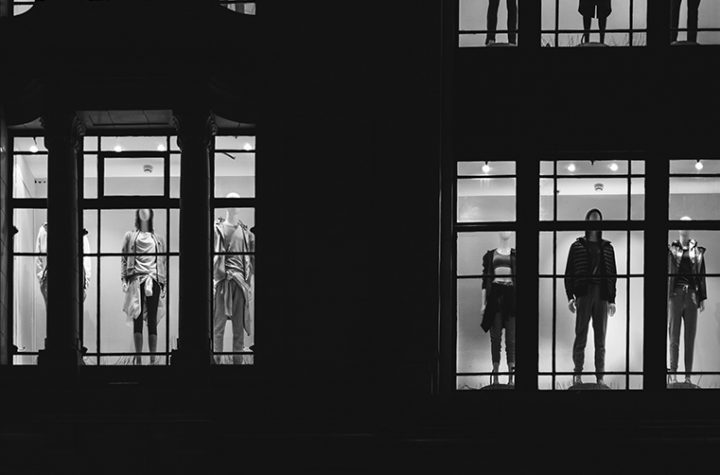
Coronavirus testing has improved significantly over the past several weeks but is still not where it needs to be as states look to reopen, health experts say.
The U.S. ran an average of 250,000 tests a day in the first week of May. The percentage of COVID-19 tests coming back positive is falling, a sign that the pandemic could be slowing.
Still, testing remains limited in large parts of the country, including states that are planning to loosen restrictions on social distancing.
Public health officials warn that those issues need to be resolved before the fall, when a second coronavirus wave is expected to hit the U.S. alongside the flu season — a combination that threatens to strain or even overwhelm hospitals.
Were barely scratching the surface in terms of getting people who just want to be tested able to be tested, said Michael Mina, assistant professor of epidemiology at Harvard T.H. Chan School of Public Health.
I would say that, no, we’re not where we need to be, but we’re much better than where we were. And we’re doing better now than I thought we would be just five or six weeks ago, but it’s still not optimal.
The lack of widespread testing has mired the countrys COVID-19 response from the early days of the pandemic.
But with the recent help of commercial labs, testing has increased significantly. More than 8.1 million tests have been completed since March, according to The COVID Tracking Project.
The Trump administration estimates 8 million tests will be run in the month of May alone.
But as states prepare to reopen, the Harvard Global Health Institute sees a need for more than 900,000 tests a day, an increase from previous estimates because of projections for more infections as people begin interacting again in reopened states.
Ideally, the U.S. would be able to test everyone with symptoms and their close contacts through a process called contact tracing, in addition to testing individuals who arent showing symptoms but could still be spreading the virus.
However, the country is far from setting up the kind of medical surveillance needed to fully reopen the economy. That shortcoming will become acute in the fall when doctors will need to distinguish the flu from COVID-19, experts say.
The availability of tests is still not adequate in terms of how we want to be using them, Mina said. I think we still have a long way to go to actually scale up testing to the point where, for example, we can use it to do very robust surveillance. We’re not close to that at this point.
States are still dealing with supply chain shortages of the materials needed to run tests, and experts argue the federal government needs to be more involved in resolving those issues.
We are in this for the long haul — thats why we need a national testing strategy and supply chain to support it, said Jennifer Nuzzo, a senior scholar and associate professor at Johns Hopkins Bloomberg School of Public Health.
Under pressure from governors to issue a national testing strategy, the Trump administration issued a blueprint in late April that largely puts the onus on states to develop their own plans.
Governors have found creative ways to find supplies, with Maryland Gov. Larry Hogan (R) enlisting his wife, Yumi Hogan, a South Korean immigrant, to negotiate a purchase of 500,000 tests from South Korea.
Still, not every governor has those connections, Nuzzo said, and it leads to a patchwork of availability across the country.
Overall, the U.S. is making progress on testing, based on the falling percentage of positive test results.
That number fell below 10 percent for the first time Thursday, according to the Johns Hopkins testing tracker, meaning the country is starting to cast a wide enough net to catch new infections, Nuzzo said. The more people who are tested, the lower the positivity rate is expected to be.
When your positivity percentage is higher, that means you’re properly testing the sickest of the sick and you’re not casting a wide enough net to make sure you catch as many infections as possible, she said.
At its highest, the countrys positivity rate was nearly 22 percent. The World Health Organization recommends a positivity rate of less than 10 percent.
But with the amount of tests varying by state, with some having high positivity rates, that suggests they either arent running enough tests or theyre experiencing outbreaks.
Kansas, Minnesota, Missouri, Nebraska, Puerto Rico and South Dakota all saw an increase in the percentage of tests coming back positive last week and all have rates higher than 10 percent, according to Johns Hopkins.
States experiencing large outbreaks, like Illinois, Maryland and New York, have a high percentage of positive tests but saw decreases last week, indicating they are doing more tests and their outbreaks are slowing.
There are still many parts of the U.S. where the positivity is way too high, and including in states that are now in the process or have announced intention to reopen, Nuzzo said.
And what makes me really worried about those states is that the fact that their positivity is so high and it suggests that they’re probably missing a lot of infections out there that are not included in their case count, she added. These may be people who are mildly ill, who maybe don’t even have symptoms, but they’re very much capable of spreading the disease.





More Stories
All the reaction from the Premier League, plus FA Cup first-round goals.
Company co-founder Josh Giegel and Sara Lucian are the first people in history to ride in a Hyperloop.